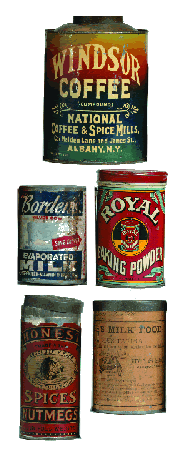
The large armies of the 18th century required a reliable source of quality food. Limited food availability was among the reasons the extensive military campaigns were limited to the summer and fall months. A desire to extend military campaigns and feed his army well lead Napoleon to offer a cash prize of 12,000 francs to anyone would could devise an inexpensive and reliable method of preserving food. Experimentation to win the large prize began.
Nicholas Appert, a French confectioner and brewer, conceived the idea of preserving food in bottles, like wine. He began experimenting with the idea of heating food to very high temperatures and sealing it in airtight containers. His experiments were a success and over the next 10 years he discovered that the amount of acid in the food affected the temperature and time needed for processing. Samples of Appert’s preserved food were sent to sea with Napoleon’s troops for a little over four months. Partridges, vegetables, and gravy were among 18 different items sealed in glass containers. All retained their freshness. Appert was awarded the cash prize in 1809. In 1810, he made his discovery public in an essay entitled The Art of Preserving Animal and Vegetable Substances for Several Years which included directions on how to can over 50 different foods.
 Appert’s method of canning was quickly employed by many other European countries. However, the fragile glass jars caused problems for transportation. Peter Durand, a British merchant, developed a process for sealing food in tin containers. He received British Patent No. 3372 on August 25, 1810 for his process.
Appert’s method of canning was quickly employed by many other European countries. However, the fragile glass jars caused problems for transportation. Peter Durand, a British merchant, developed a process for sealing food in tin containers. He received British Patent No. 3372 on August 25, 1810 for his process.
Durand had little interest in continuing in the canning business himself and sold his patent to Bryan Donkin and John Hall for 1,000 British Pounds. In 1812, they set up the first commercial canning factory using tinplate cans in Bermondsey, England. The British military needed to be able travel longer and further just the same as the French. These new tinplate cans were being supplied to the British military by 1813.
Canning in the United States began in 1812. Thomas Kensett, an Englishman, emigrated to the new world and brought his knowledge of canning with him. He opened a small canning plant on the New York waterfront and began producing sealing jars of salmon, lobster, meats, fruits and vegetables. Eventually, after finding the glass jars hard to pack and easily broken, Kensett switched to tin. Kensett and his father-in-law received a US patent on January 19th, 1825 for food storage in tin cans.
Today you can find everything in a can from fruit and vegetables to SPAM. More than 170 can manufacturing plants in 36 states produce approximately 131 billion cans in the United States each year.
